Q
What Segment is Perodua Bezza?
The Perodua Bezza is a four - door sedan in the A - segment. It is mainly targeted at entry - level buyers in the mid - to low - price range in the Malaysian market, emphasizing affordability and low fuel consumption. Its body size (with an overall length of 4,150 mm) is smaller than that of B - segment sedans like the Toyota Vios and Honda City. However, it has an edge in price, starting from around RM34,000, which meets the local consumers' demand for a cost - effective commuter car.
Despite its relatively small size, the Bezza still offers engine options of 1.0L (1KR - VE) and 1.3L (1NR - VE), making it suitable for city commuting. It is easier to handle and park on congested roads, such as those in the Kuala Lumpur city center. Its competitors in the same segment include the Proton Saga (an A - segment sedan), while the higher - end B - segment market is occupied by Perodua's own Aruz (an SUV) and Daihatsu/Toyota models.
Although it may not stand out in terms of size and power, the Bezza remains one of the best - selling A - segment sedans in Malaysia, thanks to its low maintenance costs and the high resale value of the Perodua brand.
Special Disclaimer: This content is published by users and does not represent the views or position of PCauto.
Related Q&A
Q
What is the fuel consumption of Perodua Bezza 2018?
The fuel efficiency of the 2018 Perodua Bezza varies depending on the engine configuration. The official fuel consumption figure for the 1.0-liter 1KR-VE three-cylinder engine is 22.8 km per liter (approximately 4.39 liters/100 km), while the 1.3-liter 1NR-VE four-cylinder version delivers 21.3 km per liter (around 4.69 liters/100 km). These figures are based on Malaysian road standard test conditions, and actual fuel consumption may vary slightly depending on driving habits, road conditions, and vehicle maintenance status. As an entry-level sedan focused on affordability and practicality, the Bezza's fuel-saving performance benefits from its lightweight body design and efficient engine tuning, making it particularly suitable for city commuting. To further optimize fuel efficiency, it's advisable to keep up with regular maintenance, use the appropriate viscosity oil, and avoid aggressive driving behaviors like rapid acceleration or sudden braking. In the same vehicle class, fuel efficiency is typically influenced by factors such as engine technology, body weight, and transmission matching, so it's worth comparing the technical features of different brands when making a purchase decision.
Q
What engine is in the 2018 Bezza?
The 2018 Perodua Bezza comes with two naturally aspirated engine options: a 1.0-liter and a 1.3-liter. The 1.0-liter 1KR-VE three-cylinder engine puts out 51 kW of maximum power and 91 Nm of peak torque, while the 1.3-liter 1NR-VE four-cylinder unit delivers 73 kW of max power and 121 Nm of peak torque. Both engines are paired with either a four-speed automatic transmission or a five-speed manual gearbox to suit different driving preferences. These engines are known for their fuel efficiency and reliability, making them especially good for city commuting. The 1.3-liter version stands out with better performance, ideal for drivers who want a bit more pep. The upside of naturally aspirated engines here is their simple construction and low maintenance costs, perfect for budget-conscious buyers who value practicality. Plus, both engines met the emission standards back then, showing Perodua's solid tech in the small car segment. If you're looking at a used Bezza, the 2018 model's engine is steady and routine upkeep is easy, making it a really good value pick.
Q
Is Bezza safe?
The Perodua Bezza, one of Malaysia's best-selling entry-level sedans, delivers safety features that are pretty much par for the course in its price bracket. The base models come with dual airbags, ABS with EBD, while the higher trims step things up with active safety kit like VSC (Vehicle Stability Control) and TRC (Traction Control). It scored a 4-star rating in ASEAN NCAP crash tests, which means the body structure offers decent protection in a collision.
Now, it's worth keeping in mind that the Bezza is a lighter car with a front-wheel-drive layout. That can make it feel a bit less planted than more premium models at higher speeds or on slippery roads, so keeping a sensible speed and leaving a good safety gap is always a smart move.
For budget-conscious buyers, the Bezza's safety package covers the basics for city driving just fine. But if you want a bit more peace of mind, adding extras like rear parking sensors or a dashcam wouldn't hurt. And with Malaysia's rainy weather, don't sleep on tire maintenance—regularly checking tread depth and pressure goes a long way in keeping you safe. After all, even the best safety systems rely on good tire grip to work properly.
Q
Is Perodua a Toyota brand?
Perodua isn't actually a Toyota brand, but there's definitely a tight-knit partnership between the two. Perodua's Malaysia's homegrown automaker, founded back in 1993, while Toyota needs no introduction as the famous Japanese automotive giant. When it comes to tech, parts supply, and manufacturing, Perodua has deep-rooted collaborations with Toyota and its subsidiary Daihatsu. Take their models, for example—several Perodua vehicles ride on Daihatsu platforms and use their powertrains. On the flip side, Toyota has also rolled out models in Malaysia that share production lines with Perodua, like the Toyota Rush and Perodua Aruz, which are platform twins. This kind of collaboration is pretty standard in the auto industry; it helps local brands cut costs and boost their technical know-how, while letting international players better adapt to the local market. For Malaysian consumers, Perodua cars are usually known for being budget-friendly and cheap to maintain, whereas Toyota stands out for its reliability and global after-sales network. Both have their strengths, so buyers can pick the one that best fits their needs.
Q
Does Bezza save fuel?
Yeah, the Perodua Bezza has definitely made a name for itself as a fuel-sipper, perfect for zipping around Malaysia's daily commutes. Under the hood, you'll find those efficient 1.0L and 1.3L Dual VVT-i engines, and paired with its lightweight build, the official figures say it can sip as little as around 4.0 liters per 100 kilometers. In real-world driving, if you keep a steady throttle and stick to sensible speeds, you can even nudge that fuel efficiency a bit further. Plus, the Bezza comes with this ECO driving mode indicator to help you get into more economical habits behind the wheel. For folks who prioritize fuel economy, it's a solid pick.
In the Malaysian market, rivals like the Proton Saga also put up a good fight when it comes to miles per liter, but the Bezza's compact size and tried-and-tested powertrain really shine when you're navigating city streets. My advice? Before you sign on the dotted line, check out the Malaysian Energy Efficient Vehicle (EEV) certifications and think about how you actually drive. Oh, and don't sleep on regular maintenance and keeping those tires properly inflated – they can make a big difference to how much fuel you end up burning, too.
Q
Is Bezza good for long distances?
The Perodua Bezza, one of Malaysia's top picks for budget-friendly sedans, is worth a look if you're thinking about long drives. Now, both the 1.0L and 1.3L engines are all about saving fuel, but the 1.3L Dual VVT-i paired with that 4AT gearbox? It does a better job keeping power steady when you're cruising on the highway. And with an official fuel consumption figure of 22.5km/L, those long trips won't hit your wallet as hard at the pump.
Safety-wise, it's got a solid ASEAN NCAP 5-star rating, so your passengers are covered. The boot's a real standout too – 508 litres is plenty to swallow all the family luggage for a road trip. That said, the cabin insulation is on the thinner side, so you will notice more wind noise once you pick up speed. A quick tip: keep an eye on your tyre pressure and cooling system regularly to make sure it stays reliable for those longer hauls.
For families on a tight budget who need to clock up the kilometers between states, the Bezza makes a lot of sense. It delivers where it counts: fuel efficiency, space, and the basic safety kit. If a quieter ride is high on your list, though, you might want to think about adding some aftermarket sound deadening strips or maybe stepping up to a higher-spec model.
Q
Is Bezza using a Toyota engine?
The Perodua Bezza doesn't actually use Toyota engines. Instead, it's powered by Perodua's own in-house developed 1.0L and 1.3L DVVT engines. These belong to Perodua's EEV (Energy Efficient Vehicle) lineup and feature Dual Variable Valve Timing technology, which is all about boosting fuel efficiency while still delivering decent power. The 1.0L puts out 67PS, and the 1.3L ups that to 94PS. You can pair either engine with a 4-speed automatic or a 5-speed manual gearbox.
Now, even though Perodua and Toyota do have a partnership and share some tech platforms on certain models, the Bezza's engines are strictly Perodua-designed and built – no direct Toyota engine swaps here. For Malaysian buyers, the Bezza's main draws are its affordability and practicality. It really shines as a city runabout or a family car. Plus, Perodua's got a solid after-sales network across the country, so getting it serviced or repaired is pretty hassle-free.
If you're into engine tech, it's worth diving deeper into how DVVT works. Basically, it optimizes when the valves open and close, which in turn ramps up engine efficiency. It's a common fuel-saving tech you'll find in lots of car brands these days.
Q
Is Perodua Bezza worth buying?
The Perodua Bezza, one of Malaysia's best-selling entry-level sedans, is definitely worth a look – especially if you're on a tight budget but still want something practical. Under the hood, you've got two efficient engine options: 1.0L and 1.3L, both packing Dual VVT-i tech. Fuel economy is a real strong suit here; official figures claim the 1.0L model sips fuel as low as 21.1km/L, making it perfect for city driving. Inside, it's surprisingly roomy for its class, and that 508-liter trunk? More than enough for your average family's daily grind.
Safety-wise, all Bezzas come standard with ABS+EBD, dual airbags, and ISOFIX child seat anchors. Step up to the higher trims, and you'll even get Vehicle Stability Control (VSC) and Traction Control (TRC) – nice to have. The interior is mostly hard plastics, sure, but that's par for the course at this price point, and the build quality feels solid enough. The infotainment system covers the basics too, with Bluetooth and USB connectivity.
A big plus for Perodua is their widespread after-sales network, which means servicing and repairs won't break the bank – that makes it a solid long-term value proposition. When you factor in resale value, the Bezza also holds its own against rivals, which is a big bonus if you think you might upgrade down the line.
Now, if you're craving more power or a fancier spec sheet, you might need to stretch your budget a bit. But when you balance price, fuel efficiency, space, and the brand's reputation for reliability, the Bezza remains a seriously competitive choice in the Malaysian market.
Q
How much is Bezza 2020 in Malaysia?
The 2020 Perodua Bezza's pricing in Malaysia varies depending on the trim and specs. The base 1.0L Standard G with a manual gearbox starts around RM34,000, while the range-topping 1.3L Premium X with auto transmission goes for about RM50,000. Of course, actual prices might fluctuate a bit based on dealer promotions or, for used models, their overall condition.
This little econobox has made a name for itself with its impressive fuel efficiency and practical nature. Under the hood, you'll find either a 1.0L or 1.3L engine, and it comes packed with safety features like VSC (Vehicle Stability Control) – making it a solid pick for budget-conscious families or first-time car buyers.
It's worth pointing out that the 2020 model is a facelift, so it gets some nice upgrades over the earlier versions. Think things like a newly designed front bumper and fresh wheel designs to keep it looking current.
If you're shopping the used car market, keep in mind that mileage and service history will really affect the asking price. I'd definitely recommend checking out Perodua's official certified pre-owned channels or reputable platforms to get real-time market rates. And don't forget to cross-shop with competitors like the Proton Saga – it never hurts to compare before making your final decision!
Q
What is the Reslae Value of Perodua Bezza?
As one of the most popular entry-level sedans in Malaysia, the Perodua Bezza has a relatively stable performance in terms of second-hand resale value. This is mainly due to the brand's high market share, low maintenance costs, and reliable durability. According to industry data, the average residual value rate of the Bezza is about 60% - 65% after three years of use, and it can still maintain 45% - 50% after five years. The specific price depends on the vehicle's condition, mileage, configuration (such as a 1.0L or 1.3L engine), and service records. It is recommended to have regular maintenance at Perodua-authorized service centers and keep complete receipts to increase the residual value.
The factors affecting second-hand cars also include changes in market demand. For example, models with outstanding fuel economy are more favored during oil price fluctuations. The Bezza's fuel-efficient characteristic (the combined fuel consumption of the 1.0L model is about 4.2L/100km) further strengthens its competitiveness in the second-hand market. If you plan to sell your car, you can compare real-time quotes on second-hand car platforms such as Carlist or MyTukar, and adjust your expectations based on the car's body color (white and silver are more valuable) and additional configurations (such as original leather seats). At the same time, note that the Malaysian second-hand car market has a higher preference for automatic transmission models than manual ones.
In addition, Perodua's extensive dealer network and the convenience of parts supply also indirectly support the second-hand value of the Bezza, making it a practical choice for budget-conscious buyers.
Latest Q&A
Q
How many miles will a 2019 Santa Fe last?
The 2019 Santa Fe can typically last between 200,000 to 300,000 kilometers or more with proper maintenance—actual mileage depends on driving habits, road conditions, and service frequency. Its proven 2.4L or 2.0T engine options, paired with a 6-speed or 8-speed automatic transmission, deliver solid reliability. Staying on top of oil changes, transmission fluid, and filter replacements goes a long way in extending its lifespan.
The body structure uses high-strength steel with decent corrosion resistance, making it a good fit for our rainy climate. Still, it’s wise to get the underbody and suspension checked periodically for rust. For mixed driving conditions, a full service every 10,000 km is recommended. If you’re mostly doing short city trips, keep an eye out for carbon buildup.
Hyundai’s electronics have gotten more stable in recent years, but occasional software updates don’t hurt. Repair costs are reasonable for the segment, OEM parts are easy to find, and resale value is mid-pack. If you plan to keep it long-term, maintain complete service records—it’ll help with both performance and resale value down the road.
Q
How does the 2019 Santa Fe compare to other SUVs?
The 2019 Santa Fe strikes a solid balance in its segment, focusing on practicality and family needs. Its 2.2L diesel and 2.4L petrol engines deliver decent power and fuel efficiency, well-suited for local driving conditions. The third-row seating offers better flexibility than rivals like the Honda CR-V or Mazda CX-5, though its handling isn’t quite as sharp.
Safety-wise, it comes standard with seven airbags and Hyundai’s SmartSense suite—comparable to Toyota RAV4’s TSS system—but feels a step behind the Volkswagen Tiguan’s full-digital cockpit in tech appeal. Inside, soft-touch plastics dominate, with an 8-inch infotainment screen supporting Apple CarPlay. Space is tidier than the Kia Sorento’s, though not as sprawling.
Where it shines is value: the 5-year/unlimited-mile warranty beats most Japanese brands. Just note that resale value may lag behind them. A quick heads-up: your SUV choice should match your lifestyle. The diesel’s great for long hauls (though pricier to maintain), while hybrids suit city commutes better.
Q
What is the trade in value of a 2019 Hyundai Santa Fe?
The 2019 Hyundai Santa Fe typically holds a used car value between RM80,000 to RM120,000, depending on factors like condition, mileage, trim level, and service history. For example, the top-tier 2.4L Premium trim tends to command about RM15,000 more than the base model, while every additional 10,000 km on the odometer may drop the value by RM3,000 to RM5,000.
To get the most accurate quote, owners should check official certified pre-owned programs or professional valuation platforms. Keep in mind—full service records and genuine parts can significantly boost resale value. If you're eyeing a new car upgrade, some dealers offer trade-in bonuses, though these promotions usually tie into quarterly sales campaigns.
As a midsize SUV with strong local market presence, the Santa Fe’s reputation for reliability and affordable maintenance costs works in its favor. That said, fixing minor scratches or mechanical niggles before selling often pays off, as small investments can lead to better returns.
Q
How much does it cost to maintain a 2019 Santa Fe?
Based on the common maintenance items for the 2019 Santa Fe, a standard service—including an oil and filter change—typically runs between RM300 to RM500, depending on whether you use genuine or certified parts. At every 20,000 km, you’ll need to replace the air and cabin filters, which cost around RM200 to RM300. The major 40,000 km service involves checks and potential fluid replacements (like brake and transmission fluid), with total costs ranging from RM800 to RM1,200.
If you’re swapping all four tires for OEM-spec all-season ones, expect to pay roughly RM2,000 to RM3,000, though prices vary by brand. For hybrid models, battery inspections might add minor costs, but the battery pack itself usually comes with long-term warranty coverage.
Stick to the manual’s service schedule and keep records—it’s key for maintaining performance and resale value. Simple habits like checking tire pressure and fluid levels can also help curb long-term repair bills. Always opt for authorized service centers to ensure compliant parts and workmanship.
Q
Do 2019 Hyundai Santa Fe have transmission problems?
The 8-speed automatic transmission in the 2019 Hyundai Santa Fe delivers solid performance overall, though some owners have reported occasional mild jerking during low-speed gear changes. These cases typically stem from software calibration rather than mechanical issues, and most can be resolved with a transmission control module update at your dealership.
Hyundai's transmission tech has made significant strides in recent years—their wet dual-clutch and 8AT units now rival industry standards for smoothness. To maximize longevity, stick to the recommended maintenance schedule (transmission fluid changes every 60,000 km or as specified in your manual).
If you notice shifting irregularities, prioritize checking sensors or solenoid valves—these electronic components can be slightly more prone to issues in hot, humid climates. Early diagnosis prevents bigger headaches down the road. Worth noting: all automatic transmissions may exhibit delayed shift logic in heavy stop-and-go traffic as part of their protective programming. Using manual mode occasionally or highway driving helps keep things responsive.
For used-car shoppers, always scan for transmission trouble codes via OBD and test-drive across all speed ranges. Listen for unusual noises or slippage to rule out mechanical wear.
View MoreRelated News

All-New Perodua Bezza Coming 2025: Built on Advanced DNGA Platform
LienJun 4, 2025
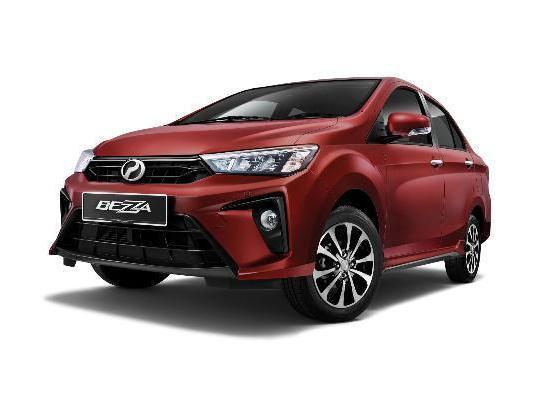
How Much is the Perodua Bezza? Tips for Purchase and Cost-effectivness
LienMar 25, 2025
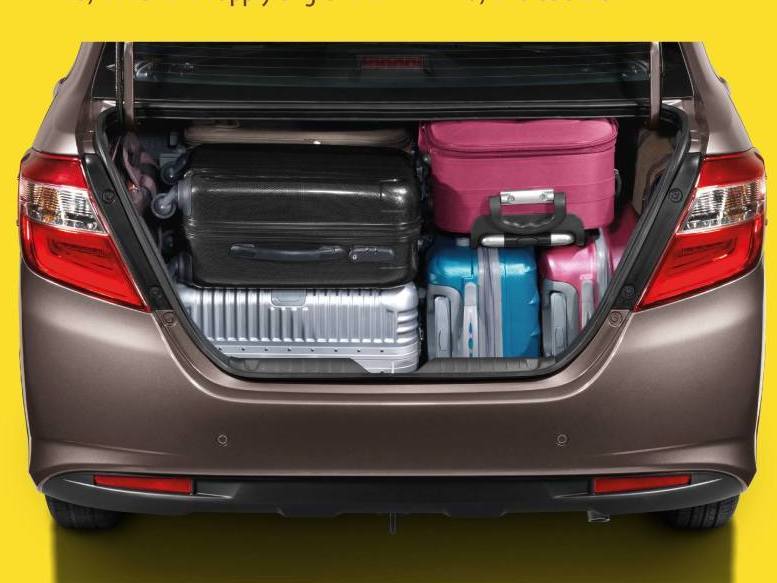
How big is the boot space of Bezza actually?
MichaelMar 12, 2025
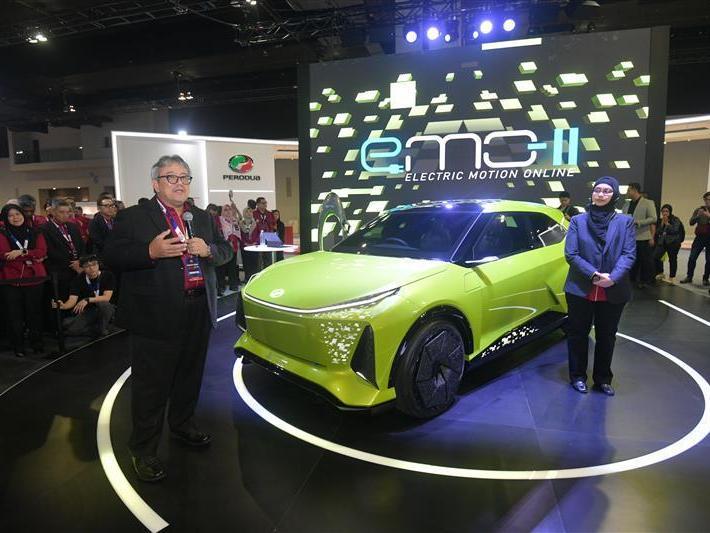
What will the new Perodua Car look like in 2025? What kind of changes will they undergo?
LienMar 3, 2025

Perodua Bezza is the best-selling, do consumers value fuel consumption or price?
MichaelSep 30, 2024
View More





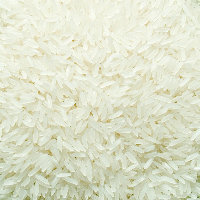







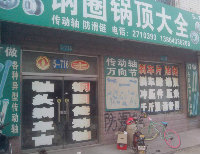
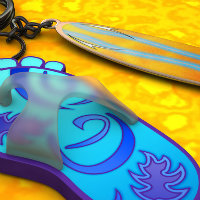



Pros
Cons